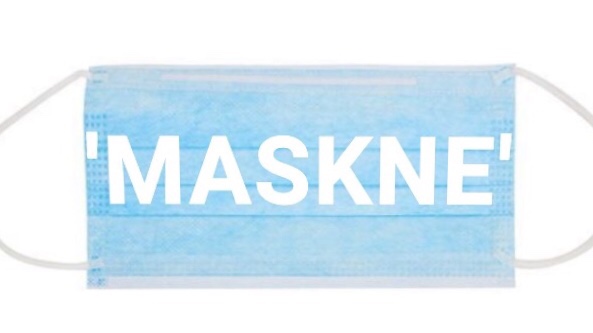
It’s already been a pretty rough year with the virus, politics, and the economy. And on top of it all, a majority of us have been dealing with acne from our masks.
Depending on the person and their skin type, mask acne can be caused by a few different factors such as:
- Mask Friction
- Trapped Moisture
- Heavy Moisturizer/Makeup Use
- Fragranced Detergent/Fabric Softener
- Dirty Mask
How To Control Your Mask Acne:
▪️ Wash your mask every night. (I’m hoping your already doing this one) If your skin is sensitized and developing a rash, you may want to switch your regular detergent for a hypoallergenic (& fragrance free) detergent/fabric softener. A rash could be a sign of an allergic reaction.
▪️ Relieve Mask Friction by stretching the fabric of your mask so the fit is more laxed, but still efficient. (I’m sure you’ve probably already tried this)
But if you are suffering from extreme irritation and friction, use a barrier cream. (Such as 3M Cavillon) Apply this ONLY on the affected areas. This will prevent the mask from rubbing directly on your skin.
▪️ Fix your skincare regimen. Trapped moisture can cause an overgrowth of bacteria, which then causes acne, inflammation, and breaks down your skin barrier over time.
To treat acne from wearing masks, our goal is to get rid of existing bacteria, build a hydrating (not moisturizing) protective barrier and soothe irritated skin. Below are generalized steps and recommendations to help guide your skincare routine
1. Double cleanse your face twice a day with an oil cleanser (to rid of excess oil) then a calming cleanser. The last thing you need is accumulating bacteria and sebum.
2. Gently exfoliate 2x a week before bed. This will clear your skin of dead cell and sebum build up as well as increasing your skin’s renewal rate.
However, it is important to avoid ‘leave on’ exfoliant products (like anti agin serums) during the day. You want your skin protected under the mask. Not shedding and exposing it’s barrier. It’s best to do this at night.
3. Use a light toner. This is optional, but it is recommended to prep your skin to better absorb products.
I would recommend using a calming or antioxidant mist depending on your skin. My favorite is Dermalogica’s Antioxidant Hydrating Mist. It gives your barrier a protective shield while comforting the skin.
4. Use serums that gently target acne and inflammation while increasing your skins protection. Watch out for the “smoothing” or AHA/BHA serums. We don’t wanna apply that during the day, under our mask. Instead, opt for antibacterial, antioxidant, or low doses of niacinamide (or other low key acne fighting ingredients). Below are some suggestions:


5. Use a light weight, protective moisturizer. If you have dry, irritated skin, it’s best to use a medium weight moisturizer for sensitive skin. (No anti-aging moisturizers)
If you have oily skin, find light moisturizers that are water based. (You don’t need more oil)




